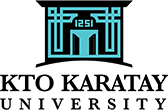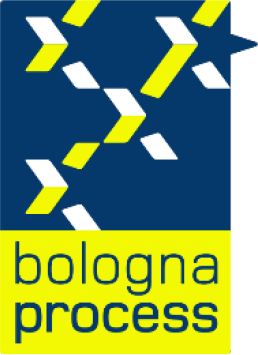Medical Imaging Techniques
Course Details

KTO KARATAY UNIVERSITY
Vocational School of Medical Services
Programme of Medical Imaging Techniques
Course Details
Vocational School of Medical Services
Programme of Medical Imaging Techniques
Course Details

| Course Code | Course Name | Year | Period | Semester | T+A+L | Credit | ECTS |
|---|---|---|---|---|---|---|---|
| 02910002 | Radiological Anatomy | 1 | Autumn | 1 | 2+0+0 | 4 | 4 |
| Course Type | Compulsory |
| Course Cycle | Associate (Short Cycle) (TQF-HE: Level 5 / QF-EHEA: Short Cycle / EQF-LLL: Level 5) |
| Course Language | Turkish |
| Methods and Techniques | sınav |
| Mode of Delivery | Face to Face |
| Prerequisites | - |
| Coordinator | - |
| Instructor(s) | Lect. Dr. Bedia KARA |
| Instructor Assistant(s) | - |
Course Instructor(s)
| Name and Surname | Room | E-Mail Address | Internal | Meeting Hours |
|---|---|---|---|---|
| Lect. Dr. Bedia KARA | B-Z26 | [email protected] | 7356 | Tuesday 14:00-15:00 |
Course Content
Anatomical Constructions in Head and Face Radiographies, Anatomic Constructions in Lung and Body Radiographs, Anatomic Constructions in Upper and Lower Extremity Radiographs, Anatomic Constructions on Mammography Images, Head and Neck Computerized Tomographies Cross-sectional Anatomy, Body (Vertebra, Thorax, Abdomen, Pelvis) , Cross-sectional Anatomy of Upper and Lower Extremity Computed Tomographies
Objectives of the Course
The aim of this course is to gain knowledge and skills about anatomical structures on conventional, digital, fluoroscopic and cross-sectional radiographic images.
Contribution of the Course to Field Teaching
| Basic Vocational Courses | X |
| Specialization / Field Courses | X |
| Support Courses | |
| Transferable Skills Courses | |
| Humanities, Communication and Management Skills Courses |
Relationships between Course Learning Outcomes and Program Outcomes
| Relationship Levels | ||||
| Lowest | Low | Medium | High | Highest |
| 1 | 2 | 3 | 4 | 5 |
| # | Program Learning Outcomes | Level |
|---|---|---|
| P2 | Has knowledge of general medical terms, first aid issues related to anatomical and physiological issues related to the field of health, and uses applied knowledge. | 5 |
Course Learning Outcomes
| Upon the successful completion of this course, students will be able to: | |||
|---|---|---|---|
| No | Learning Outcomes | Outcome Relationship | Measurement Method ** |
| O1 | Ability to express basic theoretical knowledge about the field of health. | P.2.1 | 1 |
| O2 | Ability to understand the basic principles related to the field of health. | P.2.2 | 1 |
| O3 | Ability to integrate basic theoretical knowledge about health into the field of medical imaging techniques | P.2.3 | 1 |
| ** Written Exam: 1, Oral Exam: 2, Homework: 3, Lab./Exam: 4, Seminar/Presentation: 5, Term Paper: 6, Application: 7 | |||
Weekly Detailed Course Contents
| Week | Topics |
|---|---|
| 1 | Anatomical structures in chest radiograms |
| 2 | Anatomical structures in abdominal radiograms |
| 3 | Anatomical structures in cranial radiograms |
| 4 | Anatomical structures on vertebral radiographs |
| 5 | Anatomical structures in extremity radiograms |
| 6 | Anatomical structures in pelvic CT |
| 7 | Anatomical structures in thorax CT |
| 8 | Midterm Exam |
| 9 | Anatomical structures in angiography |
| 10 | Anatomical structures in abdominal CT |
| 11 | Anatomical structures in cranial CT |
| 12 | Orbital and paranasal sinus anatomical structures in CT examinations |
| 13 | Anatomical structures in neck and ear CT examinations |
| 14 | Anatomical structures in extremity CT |
Textbook or Material
| Resources | radiological anatomy notes |
| radiological anatomy book |
Evaluation Method and Passing Criteria
| In-Term Studies | Quantity | Percentage |
|---|---|---|
| Attendance | - | - |
| Laboratory | - | - |
| Practice | - | - |
| Field Study | - | - |
| Course Specific Internship (If Any) | - | - |
| Homework | - | - |
| Presentation | - | - |
| Projects | - | - |
| Seminar | - | - |
| Quiz | - | - |
| Listening | - | - |
| Midterms | 1 | 40 (%) |
| Final Exam | 1 | 60 (%) |
| Total | 100 (%) | |
ECTS / Working Load Table
| Quantity | Duration | Total Work Load | |
|---|---|---|---|
| Course Week Number and Time | 14 | 2 | 28 |
| Out-of-Class Study Time (Pre-study, Library, Reinforcement) | 2 | 5 | 10 |
| Midterms | 1 | 22 | 22 |
| Quiz | 0 | 0 | 0 |
| Homework | 0 | 0 | 0 |
| Practice | 0 | 0 | 0 |
| Laboratory | 0 | 0 | 0 |
| Project | 0 | 0 | 0 |
| Workshop | 0 | 0 | 0 |
| Presentation/Seminar Preparation | 0 | 0 | 0 |
| Fieldwork | 0 | 0 | 0 |
| Final Exam | 1 | 30 | 30 |
| Other | 0 | 0 | 0 |
| Total Work Load: | 90 | ||
| Total Work Load / 30 | 3 | ||
| Course ECTS Credits: | 3 | ||
Course - Learning Outcomes Matrix
| Relationship Levels | ||||
| Lowest | Low | Medium | High | Highest |
| 1 | 2 | 3 | 4 | 5 |
| # | Learning Outcomes | P2 |
|---|---|---|
| O1 | Ability to express basic theoretical knowledge about the field of health. | 5 |
| O2 | Ability to understand the basic principles related to the field of health. | 5 |
| O3 | Ability to integrate basic theoretical knowledge about health into the field of medical imaging techniques | 5 |
